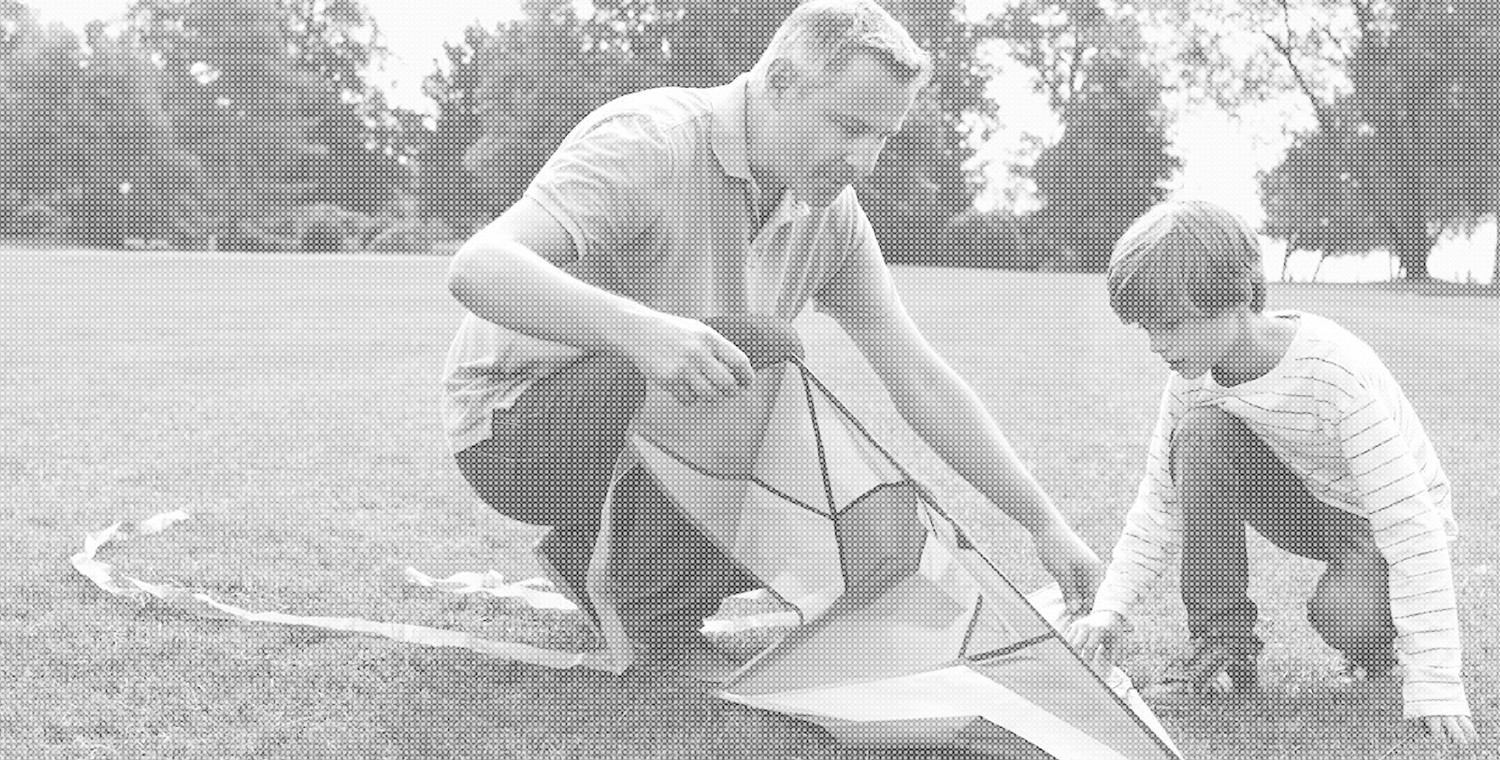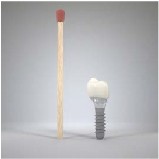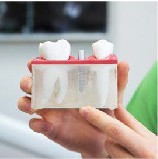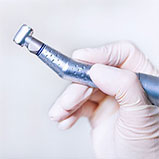WHY SHOULD YOU UNDERGO
DENTAL IMPLANTATION
IN OUR CLINIC?
WHAT ARE DENTAL IMPLANTS?
A dental implant is an analogue of the tooth root. It is a light screw made of titanium or titanium alloy, which is biologically compatible with bone and is surgically inserted into the root of the extracted tooth in the jaw bone. The type and design of the alloy material for the dental implant may affect the durability of the implanted tooth and the quality of the bone tissue around the implant in the long term. In Latvia, approximately 30 types of implants are used; the price categories vary depending on the implant manufacturer and the type of implant (from economic to premium class). The surface of the implant is porous; therefore, it significantly increases the surface area of the implant ensuring faster and more effective adhesion to bone tissues.
Dental implants enable us to restore one or several missing teeth without damaging the adjacent healthy teeth, i.e. they do not need to be milled Dental implants are also widely used to restore teeth in case of toothless jaws. The implant is inserted into the jaw bone and grows into it after a while. During implant healing, a temporary tooth can be made on it, which then will be replaced by a new, permanent tooth as soon as the implant grows in.
In simple cases, the dental implantation procedure can be performed by a general practice dentist, however, in any case we recommend contacting reliable and experienced specialists in this field who can provide services and materials of the highest quality. The specialist’s knowledge, qualifications and skills are of great importance not only for insertion of implant/s, but also for prosthetics of these implants, since dental implantation and treatment methods should be considered as a whole.
HOW IS DENTAL IMPLANTATION PERFORMED?
5 steps to reach your goal!!!
Dental implantation, like any treatment procedure, may seem painful, extended, complicated and difficult. The 5 stages described below – from diagnosis and implantation to implant ingrowth and tooth restoration – will help you to understand that there is nothing difficult in dental implantation. The first stage may be the most important – the choice of a reliable implantologist who will make precise diagnosis, carry out professional treatment and give appropriate consultations.
Stage 1: Consultation and diagnostics
During the consultation, the doctor will gather the information about your general health state and assess the oral cavity: hygiene, dental bite, anatomical situation at the site of the planned implantation – state of the gums, bone amount and quality, and will make an X-ray examination to check the site of the planned teeth in the dental bite and other factors. He will recommend the treatment that will be most appropriate in your case, how many implants will be needed to restore your natural smile and reduce the inconveniences that you are facing. Before implantation, it is very important to objectively assess the state of the jaw bone at the site of implantation, which can be done with computed tomography (CT) scan. CT allows to precisely measure in 3D precisely the bone width, height, density, and other parameters that are important for identification of the implant size and necessary location. In the situations where implants need to replace several teeth, after a traumatic extraction or a long time after extraction, CT is compulsory. If the bone tissue in the site is not sufficient for successful implant insertion, an additional procedure will be required during which the bone will be reconstructed. Then a treatment plan will be made, and the date of dental implantation surgery will be set.
Stage 2: Implantation
Dental implantation is carried out under local anaesthesia; therefore, the procedure is completely painless. You will not feel any pain during the procedure. Your doctor will insert the implant into the planned site, after having prepared the bone, and will close the wound with sutures. This procedure lasts approximately 25-35 minutes. If several implants are planned to be inserted at the same time, the procedure will accordingly last longer.
After the procedure, you will be given a list of recommendations on which your doctor will note the medicines you need to take, the procedures to be performed, and important nuances during healing.
Stage 3: Implant ingrowth period
After a classical implantation (if you do not need bone and gum correction) you will not feel any pain, or the pain will be mild, and the swelling will disappear within three days. In any case, your doctor will prescribe you painkillers, and if necessary, antibiotics to prevent infections.
The waiting time before the implant grows in the bone and the beginning of the prosthetic works may differ. It depends on a number of factors: implantation in the upper or lower jaw, bone density, whether bone buildup is required, initial stability of the implant, type of implant. For instance, the average integration time for the implant recommended by STRAUMANN is 6 to 8 weeks (for SLActive implants it is 3-4 weeks). You will have to wait longer in case you have had an operation to build up a bone – up to 9 months.
Stage 4: Installation of a new dental crown (prosthesis on the implant)
When the implant has grown into the jawbone, the tooth restoration can be continued. The implant opening procedure is performed at first, during which the healing cap is inserted into the implant. This procedure is painless, it takes about 10 minutes, and you do not need to take any medicines after it. The healing cap prepares the contour of the gum for the new tooth. When the gum has been formed, moulds have been made and other preparatory work has been completed, photographs and measurements are taken and sent to the laboratory to create the future tooth. The tooth is made for each patient individually, considering the natural shape, colour of his teeth and other nuances. The goal is to make a tooth which would be as natural as possible, correctly fir for dental bite with properly installed contact points, which prevents food from getting stuck between the teeth. Intermediate fitting stages are possible. When all the above conditions are met, and you and your doctor admit that the final result is good, the work is entrusted to you. Your doctor will tell you about the peculiarities of further care for the implant, which is slightly different from care for natural teeth, and will also tell you how to do oral hygiene so that a new dental implant serves you throughout your life.
Stage 5: Care for dental implants
Correct and regular care is very important for durability of implants and dentures installed on them.
- You should use a toothbrush with soft bristles and a special dental thread for the dental bridge (if a bridge is installed on the implants).
- You should use non-abrasive toothpastes.
- You should use night guards, if your doctor recommended them.
- You should visit a hygienist at least once every six months to undergo professional oral hygiene.
- Follow-up visits are arranged with your doctor to assess the support of the bone around the implant and the condition of the prosthesis in the oral cavity.
RECOMMENDATIONS AFTER IMPLANTATION
Your wound may bleed shortly after implantation. Saliva may turn pink. In most cases bleeding stops after a few hours.
If the bleeding continues:
- roll a gauze swab,
- put it on the wound,
- bite and hold for 30 minutes,
- apply a cold compress on the outside.
You may have swelling of the face on the second or third day after surgery.
If the general health deteriorates within a few days after surgery, you feel general weakness, increased body temperature, severe swelling at the site of surgery, you feel pain when swallowing saliva, or it is difficult to open the mouth, please call our clinic at +371 29494652, and you will get an appointment at the earliest possible time.
PHYSICAL EXERTION
Physical work is not recommended, you should mostly stay in the sitting position. In the prone position it is important to keep your head as high as possible, for example, by using two pillows.
MEDICINES
All medicines and/or nasal drops prescribed by your doctor should be taken from the first day of surgery.
SWELLING
To reduce swelling, place a package of ice wrapped in a towel to your cheek and hold it several times with short intervals (2 minutes each). Repeat this procedure several times every 15 minutes.
ANTIBIOTICS
Take the prescribed dose exactly as indicated in the prescription.
MEDICINES FOR PAIN AND INFLAMMATION
To relieve pain, you can take any painkiller prescribed by your doctor. Medicines should be taken 2-3 times daily for 2-7 days. You should continue taking all previously prescribed medicines as usually.
FOOD
You should not rinse your mouth, consume hot food or drink on the first day after surgery. It is not recommended to drink through a straw either. You should eat moderately warm food of soft consistency, chewing food on the side which was not operated.
PHYSICAL EXERTION
Physical work is not recommended, you should mostly stay in the sitting position. In the prone position it is important to keep your head as high as possible, for example, by using two pillows.
MEDICINES
All medicines and/or nasal drops prescribed by your doctor should be taken from the first day of surgery.
SWELLING
To reduce swelling, place a package of ice wrapped in a towel to your cheek and hold it several times with short intervals (2 minutes each). Repeat this procedure several times every 15 minutes.
ANTIBIOTICS
Take the prescribed dose exactly as indicated in the prescription.
MEDICINES FOR PAIN AND INFLAMMATION
To relieve pain, you can take any painkiller prescribed by your doctor. Medicines should be taken 2-3 times daily for 2-7 days. You should continue taking all previously prescribed medicines as usually.
FOOD
You should not rinse your mouth, consume hot food or drink on the first day after surgery. It is not recommended to drink through a straw either. You should eat moderately warm food of soft consistency, chewing food on the side which was not operated.
RECOMMENDATIONS AFTER “BONE BUILDUP” SURGERY
BLEEDING
Mild bleeding is possible within 24 hours after artificial bone insertion or bone transplantation surgery. Saliva may turn pink. In most cases bleeding stops after a few hours.
If bleeding continues at home, roll a gauze swab, put it on the wound, bite and hold for 30 minutes. Apply a cold compress on the outside.
INSENSITIVE LOWER LIP
The lower lip may lose sensitivity for a while after extensive bone transplant surgery. This sensation can persist for up to 6 months.
If the general health deteriorates within a few days after surgery, you feel general weakness, increased body temperature, severe swelling at the site of surgery, you feel pain when swallowing saliva, or it is difficult to open the mouth, please call our clinic at +371 29494652, and you will get an appointment at the earliest possible time.
PHYSICAL EXERTION
Physical work is not recommended, you should mostly stay in the sitting position. In the prone position it is important to keep your head as high as possible, therefore it is recommended to use two pillows. You should lie on the side which was not operated.
FOOD
You should not rinse your mouth, consume hot food or drink on the first day after surgery. It is not recommended to drink through a straw. Eat moderately warm food of soft consistency.
SWELLING
To reduce swelling, place a package of ice wrapped in a towel to your cheek for 20 minutes. Take a break for 20 minutes, then hold ice again for 20 minutes. This procedure should be repeated until evening. In case if, along with bone transplantation, you also underwent maxillary sinus floor augmentation or “sinus lift” surgery, it is forbidden to blow your nose or stop/prevent sneezing.
MEDICINES
All medicines and/or nasal drops prescribed by your doctor should be taken from the first day of surgery.
ANTIBIOTICS
Take the prescribed dose exactly as indicated in the prescription.
MEDICINES FOR PAIN AND INFLAMMATION
To relieve pain, you can take any painkiller prescribed by your doctor. Medicines should be taken 2-3 times daily for 2-7 days, whenever necessary. You should continue taking all previously prescribed medicines as usually.
DRAINAGE
If drainage has been installed during surgery, it should be removed on the second postoperative day.
ORAL HYGIENE
You can brush your teeth 2 times a day with toothpaste, then rinse your mouth with the prescribed chlorhexidine solution on the following day after surgery.
REMOVABLE DENTURE
The existing denture will not fit after surgery, as the anatomy of the oral cavity has changed.
There are two options:
- Relocate the old denture, as the non-relocated denture may disperse the sutures, and this can cause the loss of bone volume.
- Make a new denture. It can be made 1 week after the sutures are removed.
PHYSICAL EXERTION
Sports activities are not recommended, you should avoid bending and taking a hot shower or going to sauna. It is not recommended to stay in dusty areas.
FOOD
Light, moderately warm food is recommended to prevent injury of the postoperative wound. Hot food and drinks are not recommended due to short-term insensitivity of the lip to avoid possible burns.
SUTURES
The sutures will be removed on the 7th – 14th day after surgery.
SMOKING AND ALCOHOL
Smoking can affect the healing of postoperative wound and bone ingrowth. We recommend you refrain from smoking for 2 weeks after surgery.
Do not consume alcohol for 7 days after surgery.
Dental bridge vs dental implant
BIOLOGICAL COST
Replacing missing teeth with implants is more expensive and takes more time than installing dental bridges or removable dental plates, however, in case of implants you do not have to pay a “biological cost”, i.e., you do not need to mill healthy or already cured weak adjacent teeth, and you do NOT need to put additional load on them.
JAW BONE ATROPHY
The jaw bone under the dental bridge is not exerted, therefore it eventually atrophies – it becomes narrower and lower, starts to move away from the adjacent teeth. When the bone moves away, the gums also begin to move away from the adjacent teeth. Result:
1) the supporting teeth of the created dental bridge lose bone;
2) the gum moves away from these teeth;
3) the roots of adjacent teeth become more visible, and are more susceptible to the development of caries;
4) stability in the adjacent teeth decreases, they are lost faster.
A dental implant inserted in the site of a missing tooth, positively loads the gum bone, just like a natural tooth. The bone is constantly exerted, so it does not atrophy. Prosthetic tooth on the implant supports natural adjacent teeth, prevent them from falling, and protects the teeth in the opposite bite from extending to the side of “emptiness”.
OPPORTUNITIES OF BRIDGE HYGIENE
Replacing missing teeth with implants is more expensive and takes more time than installing dental bridges or removable dental plates, however, in case of implants you do not have to pay a “biological cost”, i.e., you do not need to mill healthy or already cured weak adjacent teeth, and you do NOT need to put additional load on them.
GET AN APPOINTMENT FOR CONSULTATION
To assess your situation and plan our further work, please get an appointment for a consultation.
We recommend getting an appointment by phone! It will allow us to plan the consultation time, its duration and other nuances more precisely.





